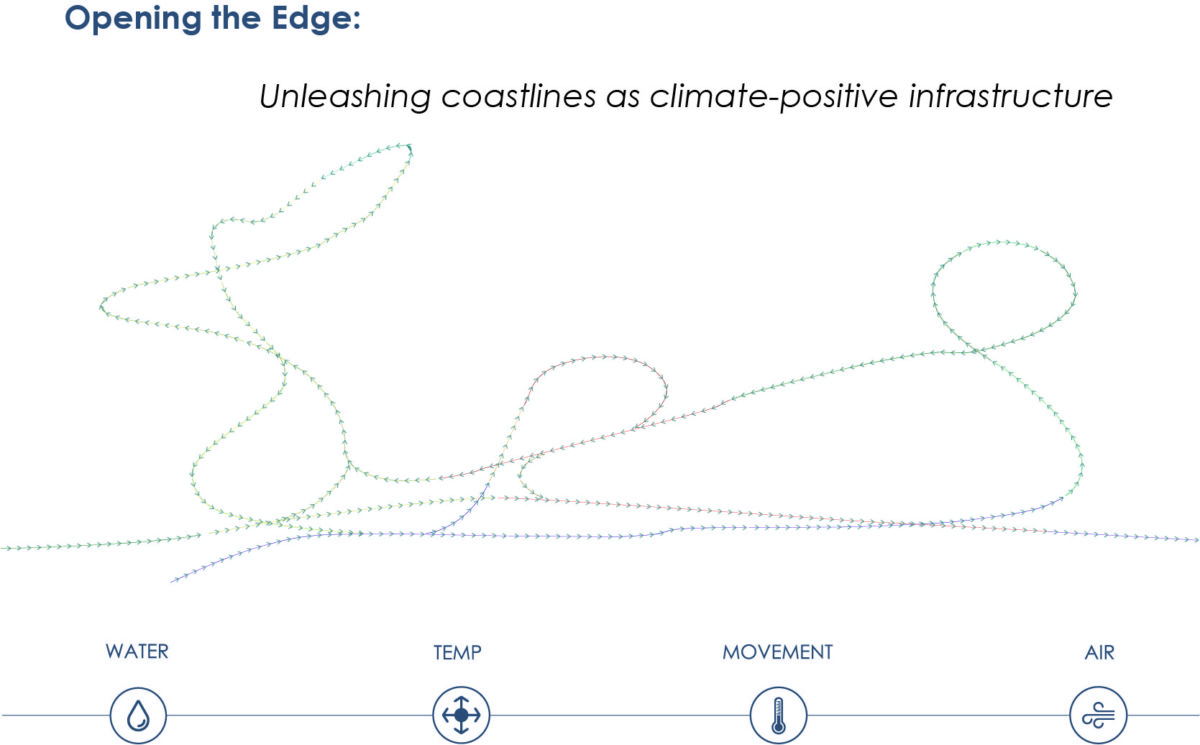Opening the Edge: Unleashing coastlines as climate-positive infrastructure
The ocean is a climate circulation system, or “conveyor belt”. It is influenced by interwoven factors of air, water, temperature and movement, which combine across oceans to regulate global weather. Each ocean has unique characteristics, such as salinity levels, temperatures, and currents that generate the different ecosystems across the globe. When the characteristics of each ocean are combined, we begin to understand the ocean as a large inflection point system. Every change and shift in the ocean create other impacts.
Sea level rise and storm surge is one of the main threats California is currently facing. As a result, 30% of the coastline has been fortified to prevent damage. But this has caused erosion problems along 80% of the coast and the loss of 90% of coastal marshes.
The solution we propose benefits ecology, infrastructure, and economy, opens the HARD EDGES of our coastlines into permeable surfaces and shift toward climate-positive infrastructure. The existing sea walls will be adapted to serve the same purposes but perform and benefit everyone in a more dynamic way. The intervention consists in a performative sea wall system with the following elements: an oyster sea wall, marsh land, marsh columns, energy collectors, and aquafarming. Once the oyster structures are placed, they can start filtering and buffering coastline. They will also serve as a base for the marsh. For higher performance, all structures can be adapted with kinetic power systems, that can capture the waves as renewable energy.
This solution provides a flexible system that addresses our needs for climate change. It builds on existing infrastructure, to provide a healthier and more productive environment for land and sea.






